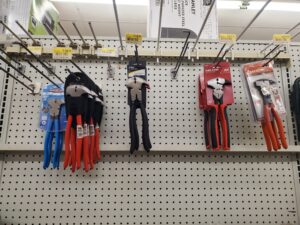No products in the cart.

Cat’s Claw Cowboy here! In this blog, I am going to discuss the top 5 things that you should know before you start Building Your Fence. There are several factors to consider before beginning a fence building project, such as determining the type of fence that is suitable for containing or keeping out your livestock, considering the terrain where the fence will be built, assessing the ease of maintenance of the fence, planning the aesthetics of the fence, and estimating the cost of constructing and maintaining the fence.
When considering the type of fence that is adequate for the livestock, you need to decide which livestock and how much pressure they are going to exert on the fence. If you’re fencing a pasture to contain cattle, a 3- to 5-strand barb wire fence is adequate. It would also be sufficient for horses.
If you plan on containing sheep and goats, then woven wire or more barb wire strands will be needed. Wthe area contains buffalo, then 6-7 strands of high tensile electric fence wire or a taller woven wire fence are required. If the area to be fenced is going to experience a high volume of pressure, such as a corral, then heavier duty material is required. Good materials for high pressure areas are pipe, continuous fence panels, corral boards, corral poles, and heavier wire panels.
The type of ground to be fenced and the elements it will experience need to be considered. Flat ground can be fenced easier and differently than rough country or mountain country. Places that experience heavy snowfall may require buck fencing, laydown fencing, or fences that require wooden stays to keep from being pushed into the ground. If this type of fence is necessary, remember to use cat claw fasteners for attaching stays to the wire. Marshy ground may require buck fencing or a higher volume of wood posts. More sandy soils, like the Nebraska Sandhills, require mostly wood post fences, as a regular T post doesn’t provide enough stability. These are just a few examples of how the ground and elements need to be considered before starting.
Before embarking on building your fence, it’s important to take long-term planning into consideration. One of the factors to consider is the ease of maintenance. Depending on the type of fence, maintenance can require access to the fence line, which may necessitate building a dozer path. Barb wire fences are generally easier to maintain than rail fences and buck fences, as they are less prone to weathering and decay. To further increase the longevity of your fence and reduce the need for staple replacements, Use Cat’s Claw fasteners instead of traditional staples on wood posts.
How will the fence appear? This aspect relates to the previous point. A fence may appear fantastic when it is new, but neglecting to maintain it can cause it to become unsightly. The key takeaway is to envision the finished product before beginning the project. This helps to bring the vision to life.
The last major thing to consider is how much the fence is going to cost. Different types of fence cost more to build and maintain. This is due to the material used and the amount of labor required to complete the project. The worst feeling is to get started on a project and have to stop midway due to running out of budgeted funds. It’s better to wait and start when there is ample time to finish without heartache.
These are a couple of the main points to consider before starting a fencing project.
An additional nugget of information is that fencing is a lot of work! particularly if it is not something that you do frequently. We suggest that you train for it as if it were a sport because that is exactly what it is! Having said that, you should also make it a point to take care of yourself while you are out on your fencing endeavors. Bring plenty of water with you to ensure that you stay hydrated, and bring snacks to ensure that your body is fueled while you are working.
I really hope that you have found this blog to be enlightening, and that it has inspired you to get started on your fencing journey. Please make sure to read all of the other fencing blogs that can be found on our website and keep an eye out for new blogs that cover other topics that are related to fencing.
If you require further information, the team here at Cat’s Claw Fasteners is ready to help! Feel free to forward your questions to our Head Cat Collector, Ralph, at ra***@***************rs.com. While you’re at it, explore our other blogs and join us on Facebook, Instagram, Pinterest, and Youtube!
Read Next: Staple Wars: The Heavy Duty Fence Staple

© 2024 Cat's Claw Fasteners, LLC | All Rights Reserved - Built by Redemptive Software
Vern says:
Looking into economic viability of pre drilling holes into drill stem posts then attaching wire using cat’s claw fasteners. instead of fence ties. looking for added protection against movement of wire on the post which is
a concern with ties over time especially with barbed wire. Any comments? Any thoughts you have will be appreciated.
Ralph Lim says:
Hi Vern!
Ralph here from Cat’s Claw Fasteners.
We would like to Thank you for your comment! In return, we have prepared you a special video to answer your comment!
Let us know if there are any more things you’d like to know about Cat’s Claw fasteners.
Ralph